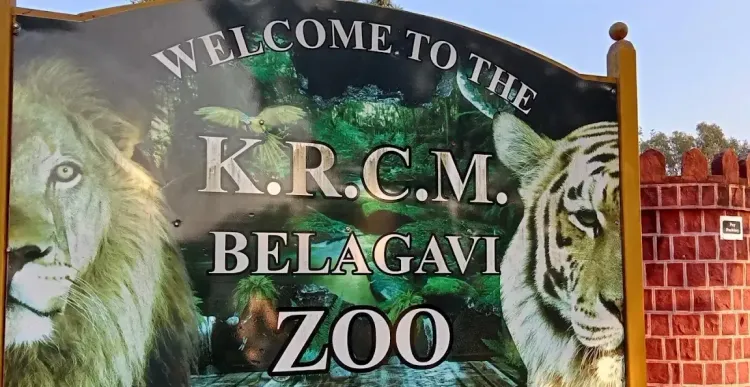What Caused the Rise in Blackbuck Deaths in Karnataka?

Synopsis
Key Takeaways
- Death toll of blackbucks reaches 29.
- Initial reports indicate a bacterial infection.
- Investigation underway into potential negligence.
- Wildlife advocates demand accountability.
- Immediate action required to protect endangered species.
Belagavi (Karnataka), Nov 16 (NationPress) The death toll of blackbucks at the Kittur Rani Chennamma Mini Zoo in Belagavi district has tragically increased to 29 after the loss of another endangered animal on Sunday. Officials reported that the initial post-mortem findings suggest a bacterial infection outbreak in the zoo.
Previously, the deaths of 28 blackbucks within three days had raised significant concerns in Karnataka, prompting authorities to await the Forensic Science Laboratory (FSL) and post-mortem reports for clarity on the cause.
This mass mortality of blackbucks—an endangered species safeguarded under the Wildlife Protection Act—has ignited outrage among wildlife conservationists and animal advocates.
It was confirmed that the blackbucks succumbed to Hemorrhagic Septicemia (HS), a severe and often lethal bacterial disease. Officials noted that this condition is reminiscent of the coronavirus pandemic and is known to spread exclusively among herbivorous animals.
A secondary post-mortem examination of three blackbucks took place on Sunday by a team of veterinarians from Bengaluru's Bannerghatta National Park. They collected samples of the food provided to the blackbucks over the past week and conducted health assessments on nine surviving blackbucks.
The situation regarding the deaths of these 28 blackbucks at the Kittur Chennamma Mini Zoo has escalated. Initially, forest officials informed the minister that the deaths were linked to feed issues, but they later disclosed to the media that the cause was a bacterial infection. Such conflicting statements, issued even before the FSL report was available, have raised questions.
The blackbucks died under dubious circumstances at the Kittur Chennamma Mini Zoo located in Bhutaramanahatti village of Belagavi taluk. The first eight blackbucks perished on November 13, and despite sending samples for laboratory analysis, another 20 died before results were received. On Sunday, another blackbuck was found dead within the premises.
In response to these fatalities, veterinarian Dr. Chandrashekhar stated that samples from the viscera, kidneys, heart, liver, and blood of the deceased blackbucks have been collected. These will be sent to the laboratory, with results expected by Tuesday, November 18. The findings will subsequently be reported to Forest Minister Eshwar Khandre.
Sunil Panwar, Member-Secretary of the Zoo Authority of Karnataka, confirmed that a team of veterinarians conducted the post-mortem examinations this morning, and an inspection of the zoo has occurred. No staff negligence has been detected thus far. Preventive measures were initiated after the first eight blackbucks died. Nonetheless, he added that if any staff lapses are found, appropriate actions will be initiated.
An investigation is ongoing to ascertain whether the mysterious deaths resulted from negligence by the Forest Department or were due to disease. Forest Minister Eshwar Khandre has mandated stringent precautions and warned that consequences would follow if staff negligence is established.
Preliminary investigations indicate a bacterial infection as the primary cause of the mass deaths, raising serious concerns regarding the alleged negligence of the zoo's veterinary staff and forest personnel.
Experts suggest that the death toll might have been significantly lower had the infected blackbucks been identified and isolated promptly. The absence of regular health monitoring and delays in addressing initial signs of illness are viewed as serious oversights by the authorities responsible for animal welfare.
The blackbucks, sourced from the Gadag Zoo approximately four to five years ago, were aged between five and six years. Among the 28 deceased, 13 were males and the rest were females, resulting in a substantial setback to the zoo's blackbuck population.









